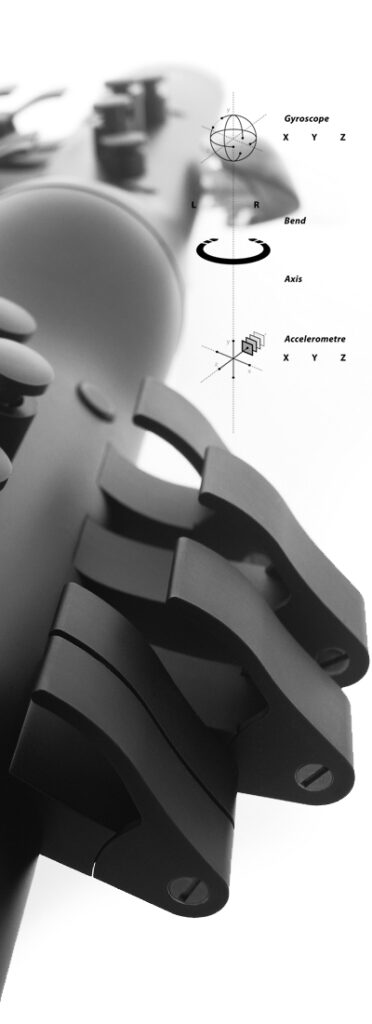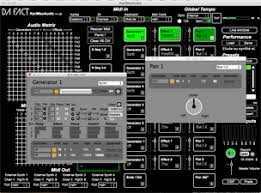Karlax!
Karlax is a type of MIDI controller ideated by the french music instruments company Da Fact, designed to “re-establish the artist’s body at the heart of the performance.”
Elected as the most bizarre instrument of the year 2010, it has been designed to offer artists a large and diverse range of controls.

It captures all the gestures, combining expressivity and intuitiveness. Fingers, wrists, elbows, forearms, torso and whole body are captured, analysed and sent to the computer, where they will control parameters of virtual instruments/patches.
Its sensors are embed to precision mechanics components. Pistons, keys, switches, benders, triggers, a rotation axis and an inertial unit can be activated separately or simultaneously.
It divides in two parts linked together by a rotary axis: the top part for the left hand and the bottom part for the right hand. It also features a screen for displaying and editing settings, thus it is possible to leave the computer off-stage.
On the front of both parts there are 4 velocity sensitive pistons, 5 continuous keys and 4 switches.
On the back of the top there are 5 switches to manipulated by the thumb and a five positions mini-joystick to browse through the user interface that is displayed on the screen.
4 additional switches are accessible on the back of the bottom part. A thumb rest is placed on both top and bottom parts.

It has a wide range of continuous sensors featuring, such as a 12 bits native sampling at 1 kHz, velocity definition, 4 types of response curves (one user-editable), adaptive latency (from 1 to 20 ms).
Regarding the motion sensor, it has:
Accelerometer = 3 axes with simultaneous attack detection on each axis. Sensitivity + – 3g.
Gyroscope = 3 axes at 2000°/ second.
Inertial sensors processing for high level output data for motion processing and recognition.

“Karlax pushes the boundaries of language,” says Nils Aziosmanoff, Chairman of LE CUBE, a creative centre devoted entirely to the digital arts.
Karlax uses a wireless network to communicate with his receiver, which is connected to the computer through USB, MIDI or OSC.
It is manufactured in plain aluminium for hardware precision parts. This aluminium is anodized black for a better protection of the surface.
It is PC & Mac compatible, enables the management and organization of
scenes in Karlax bank, allows output monitoring of the instrument and flexible MIDI assignation, sensor behaviour control, and MIDI re-mapping.
Karlax can simply be used as an interface for your audio software, yet Da Fact provides also some software to control the instruments such as Karlax-Bridge, Karlax-View.

There is another software, Karl/Max, a complete composition and live performance software specially designed for Karlax.
Here some comments from artists:
“I follow closely the innovations in music and Karlax seems to be a new instrument very well designed and adapted to new expressions of digital arts.
Jean-François ZYGEL (Pianist, improviser, composer, professor at the Conservatory of Paris, producer of “La boîte à musique” on French TV and many other creative activities.)
“Karlax is an incredible link between music and visual arts, this magic wand redefines our expressivity. Gestures become sounds, and sounds connect with images. It is such a fun experience to feel the sounds spinning around the audience following your gestures and to see images come alive from your fingertips. For the first time, the artist can master in realtime the development of a movie! And this is just a start, my imagination alreday feeds numerous projects that will soon be achieved thanks to Karlax. It is an amazing dream machine…” Philippe GEISS (Saxophonist, composer, professor to the Academy of Strasbourg in France.)
“Karlax: and the dance becomes the master of musical work. Controller where the movement is king. A playing partner with who dance leads and projects music and sound worlds at will.” Hervé DIASNAS (Choreographer, dancer, musician)
Resources
Da Fact – Karlax. www.dafact.com
Synthopia – Da Fact Karlax Is The Most Bizarre New Instrument Of The Year. (2010)